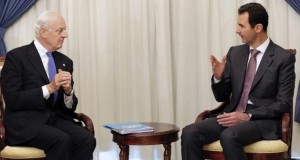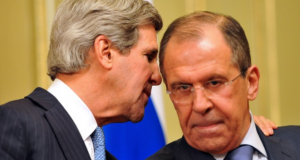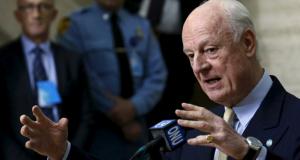On Wednesday Russian President Vladimir Putin put additional weight and support behind Syria’s Bashar Assad. His military, who was already engaged since early 2013 although in the role of supplier and advisor, launched it’s first bombing campaign in Syria. Putin, like his American counterpart Barak Obama, stated that his military was there to fight ISIS.
Here are 3 things we learned from Putins actions this week:
1. Putin, like others, has no real interest in fighting ISIS. Russia has been using the ISIS card to grant itself legitimacy to enter the Syrian conflict militarily, just as the US, France, and others did. Granted ISIS did take the desert city of Palmyra in May of this year, however other than that ISIS momentum has slowed considerably for much of this year. What has given those in Moscow reason to fear is not to be found in Mosul or Raqqa. My proof is that the bombings that Russia has put forward thus far officially amount to approximately 12. Only one of those was in the ISIS stronghold of Raqqa and that was in the countryside, on the outskirts of the province.
The areas of Jisr Shughour and Jabal al-Zawiya have no ISIS presence anywhere near it. These areas were taken from government controlled hands by Jaysh Al Fath in April of this year. The groups involved under the Jaysh Al Fath banner were overwhelmingly Syrian born and bred. How does bombing Jisr Shughour help to fight ISIS when those groups involved are bitter ISIS enemies? It is even purported that US trained fighters were also targeted by the Russian airstrikes. Several days ago the city of Taftanaz, which is on the outskirts of Idlib City was rumored to be hit by, what residents say, was Russian helicopter missile fire. ì interviewed residents who cited that the types of missiles that hit their city were unlike what they had seen used by Bashar Assad’s regime over the past 4 years.
Therefore two realities seem to clear:
A. Putin is in Syria to make sure that Bashar Assad and his regime doesn’t collapse. If it did then that would mean the lone military base Russia has in the entire Middle East would no longer be. This would be a huge setback for Moscow because it’s US rival enjoys the comforts of a military presence in:
Iraq, Kuwait, Bahrain, Turkey, Qatar, UAE, Saudi Arabia, Israel, Jordan and Egypt.
Putin of course cannot simply state that he wants to flex his muscles and spread his influence so he needs a politically correct reason to do so: ISIS. The European Union’s foreign policy chief, Federica Mogherini told Aljazeera:
“His fear is of a complete collapse of the state structures in Syria; this could be one of the reasons Russia is talking in this way, but it could also be willingness to show that Russia is an important, substantial player,” Mogherini said.
B. The destruction of ISIS would mean the destruction of Russia’s reason for a military buildup in the Middle East. Therefore Putin needs Abu Bakr Baghdadi’s group to continue to exist and dominate a few headlines. By allowing ISIS to continue to function Putin stands to gain almost as much as keeping Bashar Assad’s regime operational. This is why we are seeing and are likely to continue to see that most of the bombings will focus on non-ISIS aligned groups.
2. The news media has fallen back into the “Weapons of Mass Destruction” mindset. This means that much of what is stated in the news in recent weeks has focused ONLY on two groups fighting in Syria: the Syrian Regime vs ISIS. This is a narrative that Washington, Moscow, Tehran, and others have been trying hard to get the media to push. The narrative that the Syrian people can either choose Bashar or Baghdadi is one that grants their respective governments legitimacy for their campaigns in Syria. The media seems to have been blinded to the facts on the ground and continues to overlook the huge areas of territory that are controlled by Sunni rebel groups.
3. While Moscow has stated over and over that their goal is to fight ISIS, the proportion of strikes on ISIS controlled territory seems to tell a different tale. Three of the purported twelve strikes have been upon Jaysh Al Fath controlled areas. The skies are abuzz with the sounds of drone aircraft over Idlib City. What Moscow fears most are coalition groups like Jaysh Al Fath. Jaysh Al Fath is a coalition of many of the major Islamic groups fighting in northern Syria fighting under one banner. The face of Jaysh Al Fath and it’s spiritual leader is Dr. Abdullah Muhaysini.
Groups like ISIS are exclusionary. This means that only their version of “real Muslims” can join. This excludes most of the Muslims at large and therefore caps their growth potential. However Sunni groups like Jaysh Al Fath are much more inclusive and they appear to operate on a platform that revolves more around calling non practicing Muslims towards their version of Islam rather than removing their heads. This type of approach has created an atmosphere of trust in the minds of many ordinary Syrians as they are weary of seeing new groups pop up every other week.
 Bilal Abdul Kareem Journalist
Bilal Abdul Kareem Journalist



